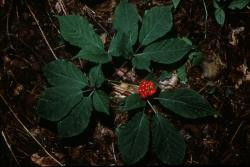Justin Sisk
Cultures, Writing, World History, Other
: Anthropology
Justin Sisk is an anthropologist and researcher working with the Smithsonian Center for Folklife and Cultural Heritage on their American ginseng project as a research intern. His areas of focus are; anthropology, folklore, religion, parapsychology, spiritualism, mythology, and ritual and material culture.
Justin Sisk's collections
Saving Appalachia's Green Gold: The What, Who, When, And How Of American Ginseng
<p>American ginseng (<em>Panax quinquefolius</em>) is a medicinal plant native to the forests of the Appalachian Mountains of the eastern United States. American ginseng and its close cousin Asian ginseng (<em>Panax ginseng</em>) have been recognized and used as an important healing herbs by both Native American tribes and Asian cultures for thousands of years. </p>
<p>In the 1600s, dwindling supplies of wild Asian ginseng caused an international search for other sources of the precious root. During this time, a Jesuit missionary in China made contact with his colleague in North America, who was introduced to American Ginseng by present-day Canada's First Nation People. By the mid-1970s, the root became an important trading commodity and supplemental source of income for many Appalachian families. It still is today, although many factors have led to regulations and conservation efforts of the wild plants that some consider “green gold.”</p>
<p>Today, it is illegal to dig ginseng from US National Parks and from privately owned land without the landowner's permission. Starting in the mid-1970s, states began imposing a ginseng "season" when it is permissible to harvest, typically from September 1 to November 30 reflecting the period when the plant reaches annual maturity. Digging in prohibited areas and out of season is considered poaching and is punishable by fines or even jail time.</p>
<p>Many people who know and love wild American ginseng feel that education about how and where the plant grows - and the current restrictions in digging it - are among the most important ways everyone can help conserve this historically, culturally, and economically important plant for future generations.</p>
<p>The images, documents, and articles in this Learning Lab collection have been chosen to help with that effort. For more information, see: <a href="https://www.fws.gov/international/permits/by-species/american-ginseng.html">https://www.fws.gov/internatio...</a></p>
 Justin Sisk
Justin Sisk
11


